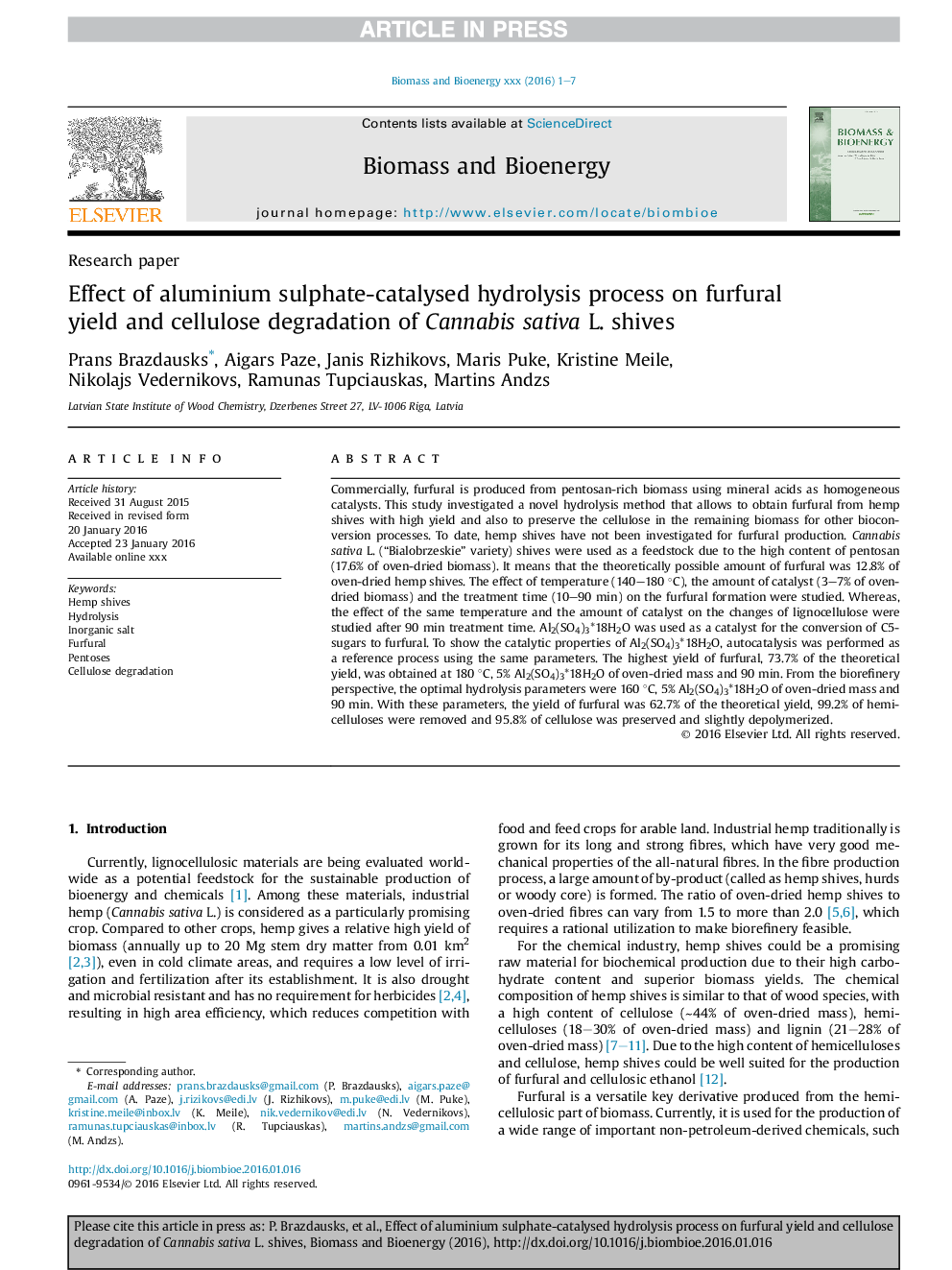| Article ID | Journal | Published Year | Pages | File Type |
|---|---|---|---|---|
| 7063298 | Biomass and Bioenergy | 2016 | 7 Pages |
Abstract
Commercially, furfural is produced from pentosan-rich biomass using mineral acids as homogeneous catalysts. This study investigated a novel hydrolysis method that allows to obtain furfural from hemp shives with high yield and also to preserve the cellulose in the remaining biomass for other bioconversion processes. To date, hemp shives have not been investigated for furfural production. Cannabis sativa L. (“Bialobrzeskie” variety) shives were used as a feedstock due to the high content of pentosan (17.6% of oven-dried biomass). It means that the theoretically possible amount of furfural was 12.8% of oven-dried hemp shives. The effect of temperature (140-180 °C), the amount of catalyst (3-7% of oven-dried biomass) and the treatment time (10-90 min) on the furfural formation were studied. Whereas, the effect of the same temperature and the amount of catalyst on the changes of lignocellulose were studied after 90 min treatment time. Al2(SO4)3*18H2O was used as a catalyst for the conversion of C5-sugars to furfural. To show the catalytic properties of Al2(SO4)3*18H2O, autocatalysis was performed as a reference process using the same parameters. The highest yield of furfural, 73.7% of the theoretical yield, was obtained at 180 °C, 5% Al2(SO4)3*18H2O of oven-dried mass and 90 min. From the biorefinery perspective, the optimal hydrolysis parameters were 160 °C, 5% Al2(SO4)3*18H2O of oven-dried mass and 90 min. With these parameters, the yield of furfural was 62.7% of the theoretical yield, 99.2% of hemicelluloses were removed and 95.8% of cellulose was preserved and slightly depolymerized.
Related Topics
Physical Sciences and Engineering
Chemical Engineering
Process Chemistry and Technology
Authors
Prans Brazdausks, Aigars Paze, Janis Rizhikovs, Maris Puke, Kristine Meile, Nikolajs Vedernikovs, Ramunas Tupciauskas, Martins Andzs,
